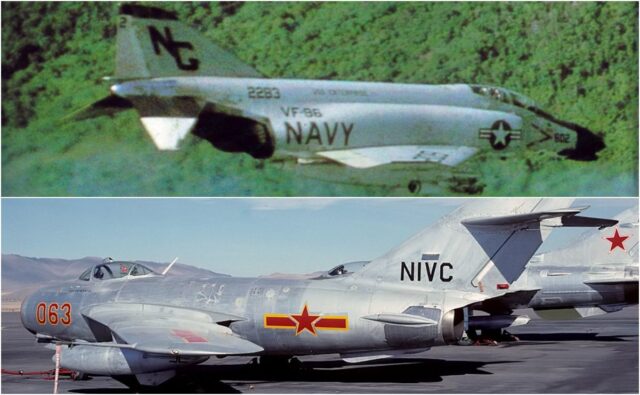Podcast: Play in new window | Download

Navy F-4 and Mig-17 [Courtesy Aviation Geek Club]

Dario Leone
Episode 2578 of the Vietnam Veteran News Podcast will feature a story about the first Mig-17 kill of the American Vietnam War. The featured story comes from the Aviation Geek Club and is titled: A US Navy F-4 scored the first Official US Aerial Victory of the Vietnam War against a Chinese MiG-17. But it remained unconfirmed for many years. Here’s why. Years after, in piecing together the events of the air battle, the destruction of the Chinese MiG-17 was given to US Navy F-4 crew members Lt. (j.g.) Terrence M. Murphy and RIO Ens. Ronald J. Fegan.
The story was provided by Dario Leone. He is an aviation, defense and military writer. He is the Founder and Editor of “The Aviation Geek Club” one of the world’s most read military aviation blogs. His writing has appeared in The National Interest and other news media. He has reported from Europe and flown Super Puma and Cougar helicopters with the Swiss Air Force.
In response to Navy requirements for a high-altitude interceptor to defend carriers with long-range air-to-air missiles against attacking aircraft, McDonnell Aircraft Company delivered the F4H (later redesignated F-4) Phantom II.
The first official American aerial victory of the Vietnam War was scored on Apr. 9, 1965 by Lt. (j.g.) Terrence M. Murphy and his Radar Intercept Officer (RIO) Ens. Ronald J. Fegan from Fighter Squadron 96 (VF-96), who downed a Chinese MiG-17 while flying from the USS Ranger (CVA-61) in F-4B Phantom II BuNo 151403, callsign “Showtime 602.” Unfortunately Murphy and Fegan were lost in the engagement with Migs.
The engagement highlighted problems which were to persist throughout the Vietnam War. These issues were:
- A poor missile reliability. Of the four missile fired in fact, none found its target.
- Murphy and Fegan attempted to turn with the MiGs at fairly low speed. They were perhaps the first of many to realize that this maneuver was potentially fatal in an F-4: in fact they lost when their Phantom ran out of energy in the turn.
- Communication problems. The two elements involved in the air battle, Frazer’s and Murphy’s, were operating on different frequencies and under different radar controllers. Frazer’s section was authorized to engage the MiGs only after they had shown hostile intent and dropped their wing-tanks. With only one main radio per F-4 the mutual effectiveness of the two sections may well have been compromised.
Listen to episode 2578 and discover more about the first Mig-17 kill of the American Vietnam War.











